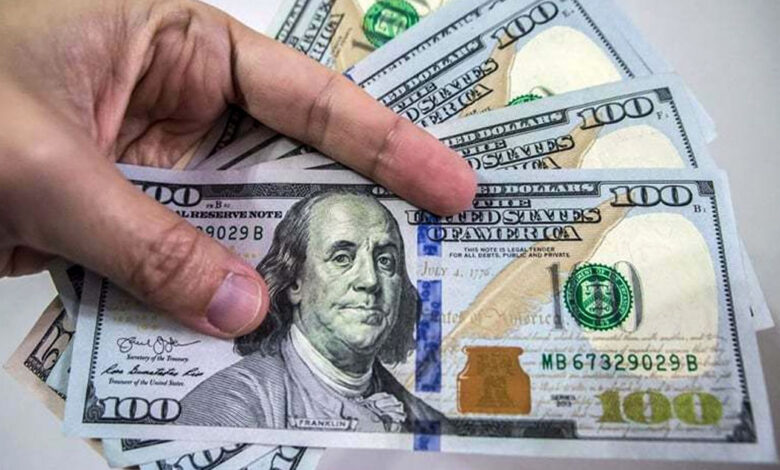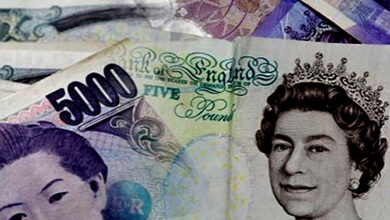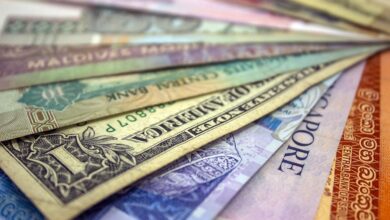U.S. Dollar Surges to 15-Month High Against Russia’s Rouble Amidst Aborted Mutiny

London/Singapore (Reuters) – In the aftermath of dramatic weekend events in Russia, the U.S. dollar exhibited its strength, reaching a 15-month pinnacle against the rouble on Monday. The surge was attributed to an aborted mutiny involving heavily armed mercenaries.
Furthermore, the dollar index found solace in the safe-haven status it holds, as concerns lingered over the prolonged monetary tightening cycles enforced by major central banks. These anxieties have cast a shadow on the global economic outlook.
The developments in Russia had traders on high alert, as heavily armed Russian mercenaries executed a tactical retreat from the southern city of Rostov. The withdrawal, prompted by a deal that curtailed their rapid advance towards Moscow, has raised questions about President Vladimir Putin’s grasp on power.
The Russian rouble, battered by these events, experienced a decline against the dollar. At 0843 GMT, it weakened by 0.2%, settling at 84.88 after hitting its lowest point since late March 2022, reaching 87.23 earlier in the trading session.
Vishnu Varathan, the head of economics and strategy at Mizuho Bank, highlighted the exposed risks of Russian instability originating from within, even though the mutiny was thwarted. He emphasized the potential challenges faced by risk assets, particularly if geopolitical risks resurface.
Traders also expressed concerns regarding the global economy’s susceptibility to the escalating cost of capital.
In response to these developments, the euro witnessed a 0.1% decline against the dollar, with the exchange rate standing at $1.0890. This drop followed a survey revealing a deterioration in German business morale for the second consecutive month in June. It signifies that Europe’s largest economy faces an uphill battle in overcoming its recessionary phase.
The downward trajectory of the euro aligns with the latest data indicating a virtual standstill in euro zone business growth in June. The manufacturing sector continues to decline, while the dominant services industry experiences sluggish expansion.
Carol Kong, a currency strategist at Commonwealth Bank of Australia (OTC:CMWAY), projected a further deterioration in the global economy due to aggressive monetary tightening by major economies. She asserted that this environment would sustain the safe-haven status of the U.S. dollar.
The U.S. dollar index, having gained over 0.5% last week, rose to 102.8, marking its first increase in almost a month.
Sterling, on the other hand, displayed a 0.2% rise, reaching $1.2740. This rebound partially reversed the currency’s 0.8% decline following a substantial 50-basis-point rate hike by the Bank of England, which triggered concerns about a potential British recession.
Flash Purchasing Managers’ Index (PMI) data from Friday indicated signs of a slowdown in the British economy, while inflation pressures remained elevated.
Turning to Asia, the Japanese yen strengthened by nearly 0.5%, reaching 143.13 per dollar. Despite this gain, it remains close to a seven-month low of 143.87 reached on Friday.
Masato Kanda, Vice Finance Minister for International Affairs and Japan’s top currency diplomat, emphasized that Japan is considering all options to respond appropriately to excessive currency movements. This statement came as a response to the recent rapid and one-sided weakening of the yen, as the Bank of Japan maintains ultra-low interest rates, contrasting with other central banks that have aggressively raised their rates.
In China, the return from a holiday prompted market participants to be on high alert for additional support measures from Beijing aimed at stimulating the country’s faltering economic recovery.
The onshore yuan experienced a 0.65% drop
, reaching a seven-month low of 7.2199 per dollar, mirroring the decline witnessed by its offshore counterpart last week when it weakened beyond 7.2 per dollar.
As of now, the offshore yuan remains 0.1% lower at 7.2214 per dollar, having touched its lowest point since late November.





